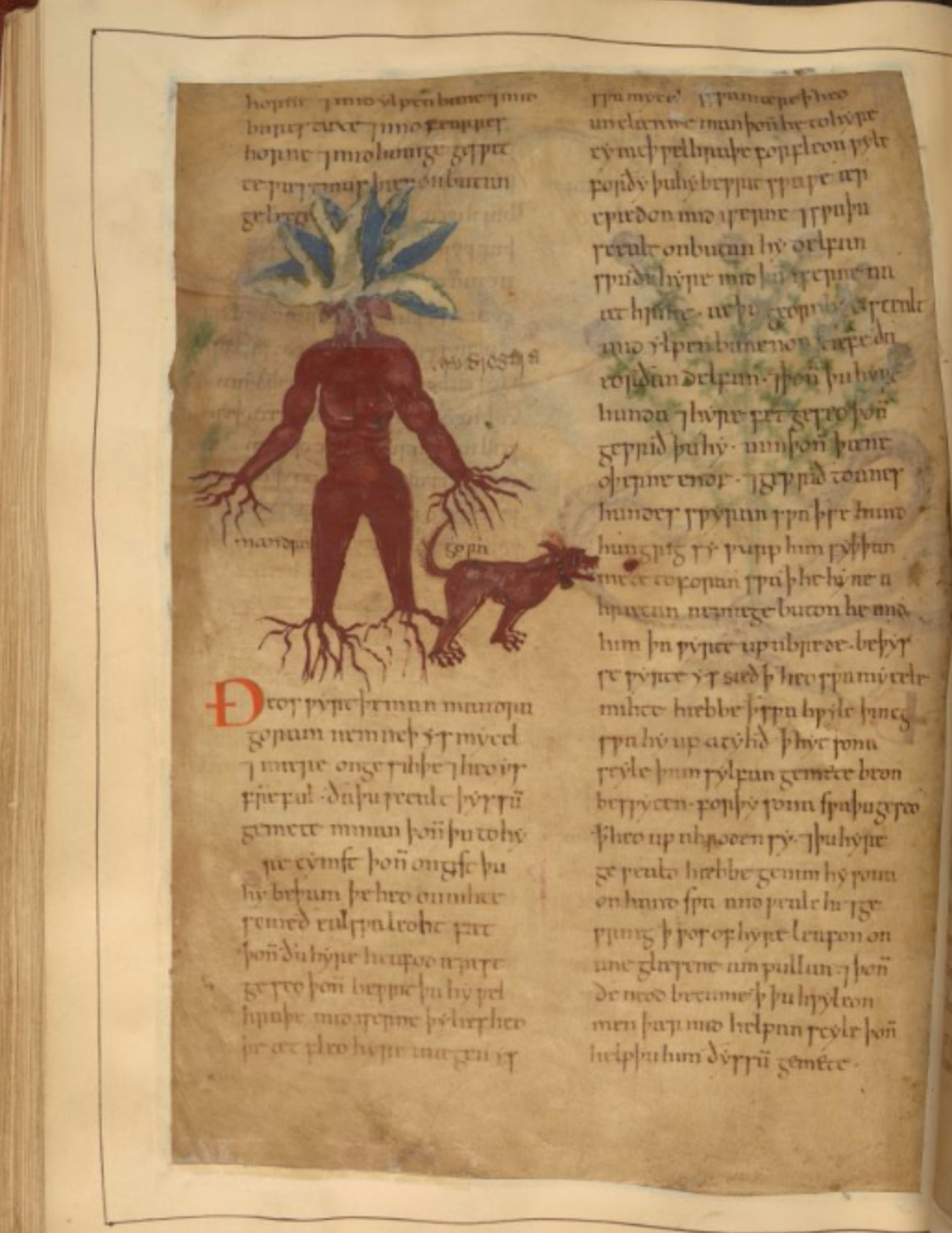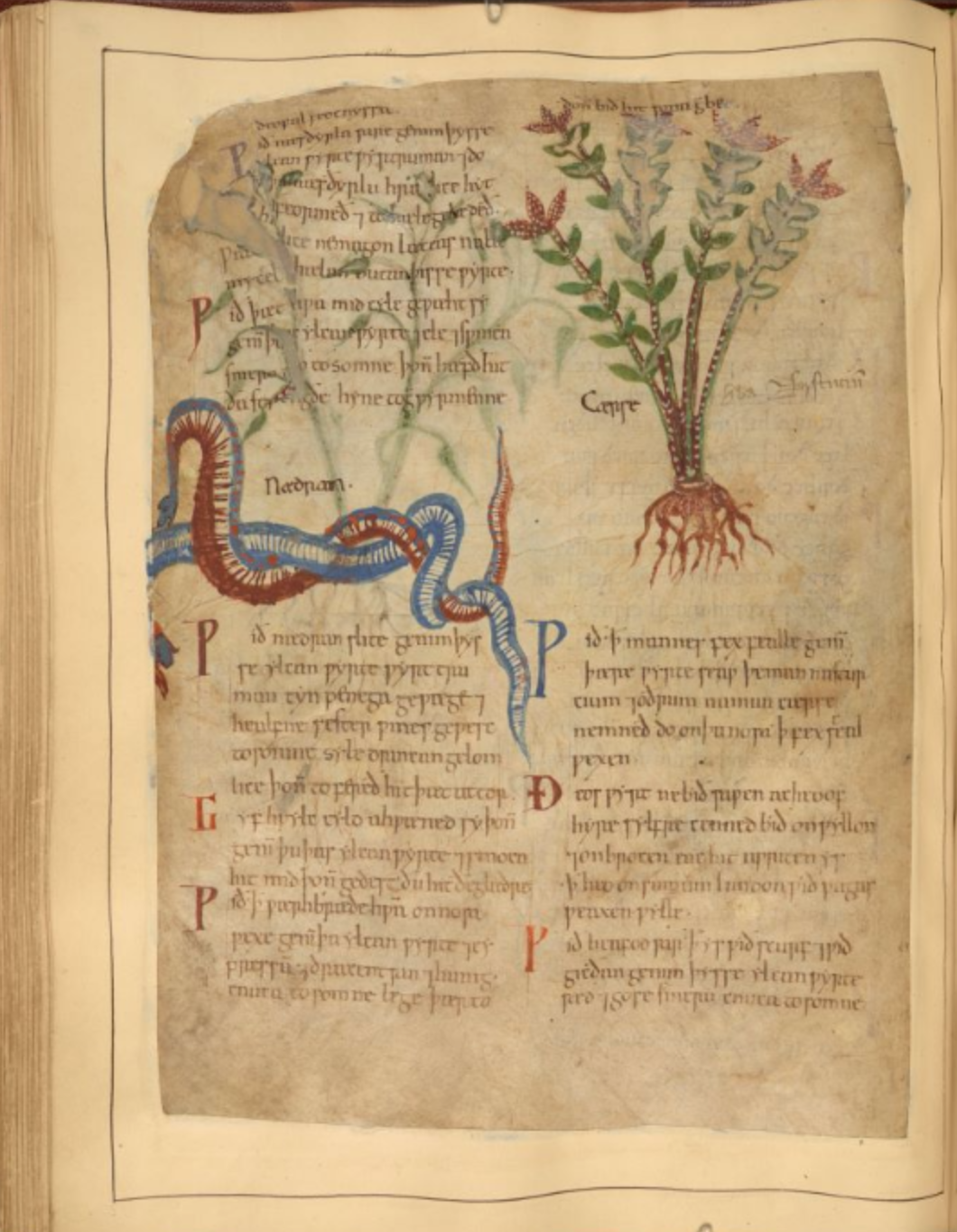1,000-Year-Old Illustrated Guide to the Medicinal Use of Plants Now Digitized & Put Online

If you don’t much care for modern medicine, entire industries have arisen to provide you with more “alternative” or “natural” varieties of remedies, mostly involving the consumption of plants. Publishers have put out guides to their use by the dozens. In a way, those books have a place in a long tradition, stretching back to a time well before modern medicine existed as something to be an alternative to. Just recently, the British Library digitized the oldest such volume, a thousand-year-old illuminated manuscript known as the Cotton MS Vitellius C III. The book, writes the British Library’s Alison Hudson, “is the only surviving illustrated Old English herbal, or book describing plants and their uses.” (The sole condition note: “leaves damaged by fire in 1731.”)

The manuscript‘s Old English is actually the translation of “a text which used to be attributed to a 4th-century writer known as Pseudo-Apuleius, now recognized as several different Late Antique authors whose texts were subsequently combined.” It also includes “translations of Late Antique texts on the medicinal properties of badgers” and another text “on medicines derived from parts of four-legged animals.”
(Somehow one doesn’t imagine those latter sections playing quite as well with today’s alternative-medicine market.) Each entry about a plant or animal features “its name in various languages; descriptions of ailments it can be used to treat; and instructions for finding and preparing it.”

Quite a few of the species with which the guide deals would have been directly known to few or no Anglo-Saxons in those days, and some of the entries, such as the one describing dragonswort as ideally “grown in dragon’s blood,” seem more fanciful than others. As with many a Medieval work, the book freely mixes fact and lore: to pick the mandrake root (pictured at the top of the post), “said to shine at night and to flee from impure persons,” the guide recommends “an iron tool (to dig around it), an ivory staff (to dig the plant itself up), a dog (to help you pull it out), and quick reflexes.” You can behold these and other pages of the Cotton MS Vitellius C III in zoomable high resolution at the British Library’s online manuscript viewer. While the remedies themselves might never have been particularly effective, their accompanying illustrations do remain strange and amusing even a millennium later — and isn’t laughter supposed to be the best medicine?

Related Content:
1,000-Year-Old Manuscript of Beowulf Digitized and Now Online
The Art of Swimming, 1587: A Manual with Woodcut Illustrations
The Turin Erotic Papyrus: The Oldest Known Depiction of Human Sexuality (Circa 1150 B.C.E.)
Based in Seoul, Colin Marshall writes and broadcasts on cities and culture. He’s at work on the book The Stateless City: a Walk through 21st-Century Los Angeles, the video series The City in Cinema, the crowdfunded journalism project Where Is the City of the Future?, and the Los Angeles Review of Books’ Korea Blog. Follow him on Twitter at @colinmarshall or on Facebook.
Origanally on http://www.openculture.com
